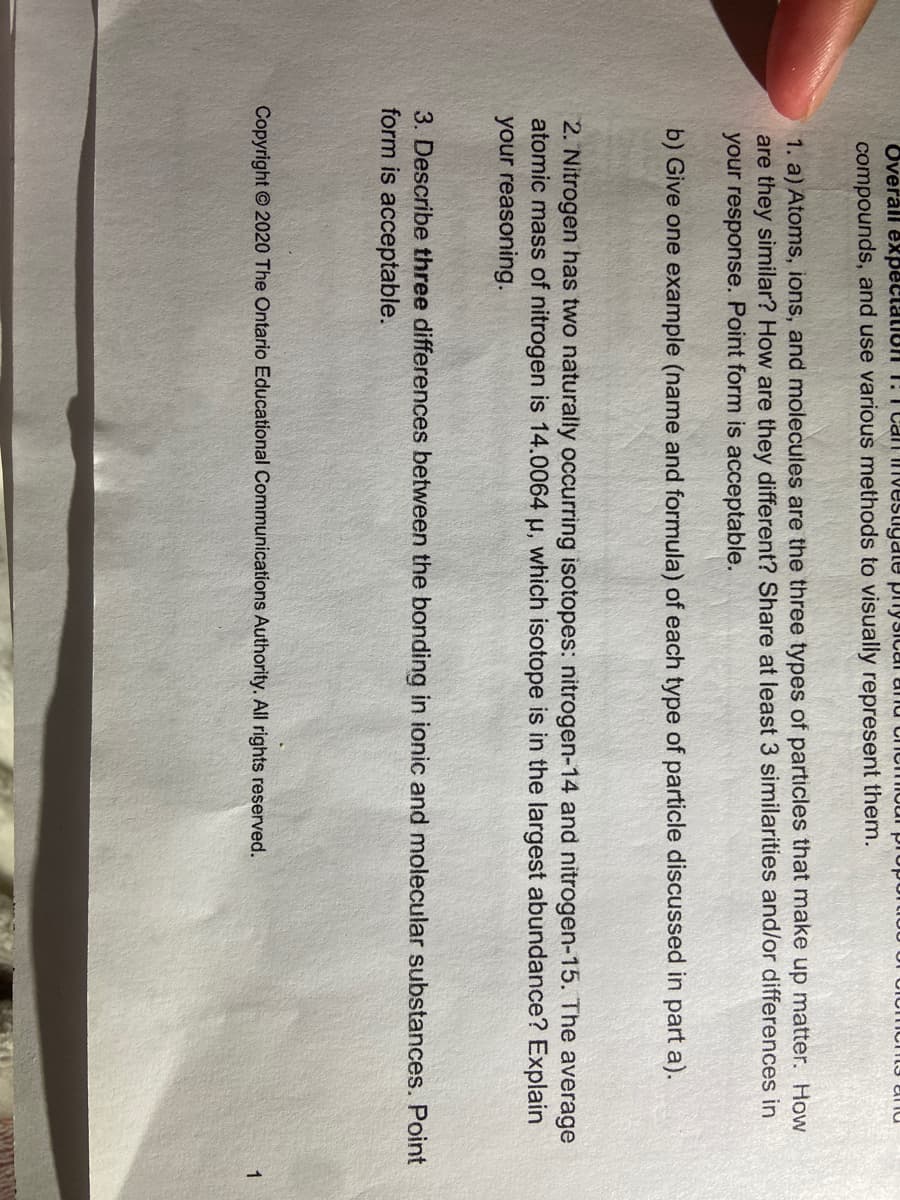1. a) Atoms, ions, and molecules are the three types of particles that make up matter. How are they similar? How are they different? Share at least 3 similarities and/or differences in your response. Point form is acceptable.
1. a) Atoms, ions, and molecules are the three types of particles that make up matter. How are they similar? How are they different? Share at least 3 similarities and/or differences in your response. Point form is acceptable.
Chapter7: Statistical Data Treatment And Evaluation
Section: Chapter Questions
Problem 7.15QAP
Related questions
Question
Number 1 please

Transcribed Image Text:Overäll expectation T:T can investigate piiysical and Cm
compounds, and use various methods to visually represent them.
1. a) Atoms, ions, and molecules are the three types of particles that make up matter. How
are they similar? How are they different? Share at least 3 similarities and/or differences in
your response. Point form is acceptable.
b) Give one example (name and formula) of each type of particle discussed in part a).
2. Nitrogen has two naturally occurring isotopes: nitrogen-14 and nitrogen-15. The average
atomic mass of nitrogen is 14.0064 µ, which isotope is in the largest abundance? Explain
your reasoning.
3. Describe three differences between the bonding in ionic and molecular substances. Point
form is acceptable.
Copyright © 2020 The Ontario Educational Communications Authority. All rights reserved.
1
Expert Solution
This question has been solved!
Explore an expertly crafted, step-by-step solution for a thorough understanding of key concepts.
This is a popular solution!
Trending now
This is a popular solution!
Step by step
Solved in 2 steps

Recommended textbooks for you


Chemistry
Chemistry
ISBN:
9781305957404
Author:
Steven S. Zumdahl, Susan A. Zumdahl, Donald J. DeCoste
Publisher:
Cengage Learning



Chemistry
Chemistry
ISBN:
9781305957404
Author:
Steven S. Zumdahl, Susan A. Zumdahl, Donald J. DeCoste
Publisher:
Cengage Learning


Chemistry: An Atoms First Approach
Chemistry
ISBN:
9781305079243
Author:
Steven S. Zumdahl, Susan A. Zumdahl
Publisher:
Cengage Learning

Chemistry: Principles and Reactions
Chemistry
ISBN:
9781305079373
Author:
William L. Masterton, Cecile N. Hurley
Publisher:
Cengage Learning